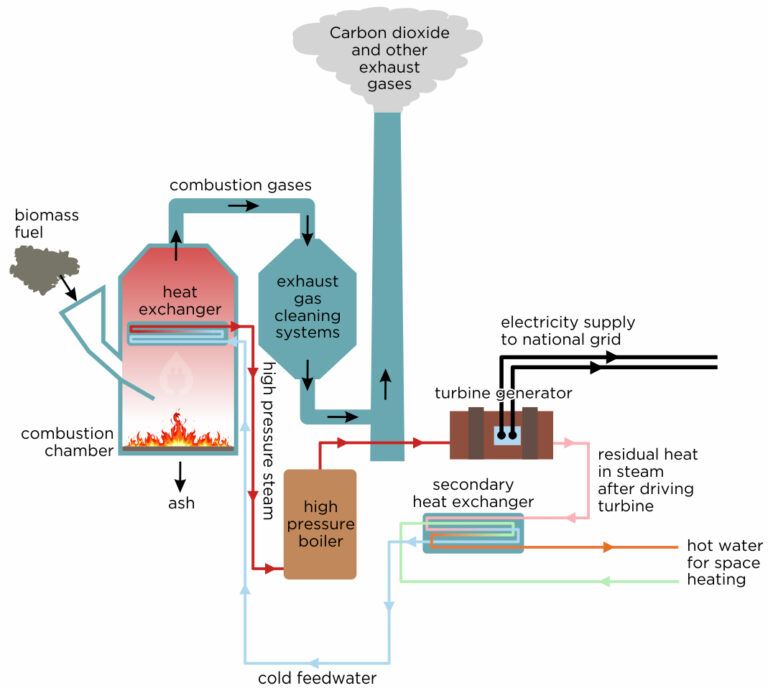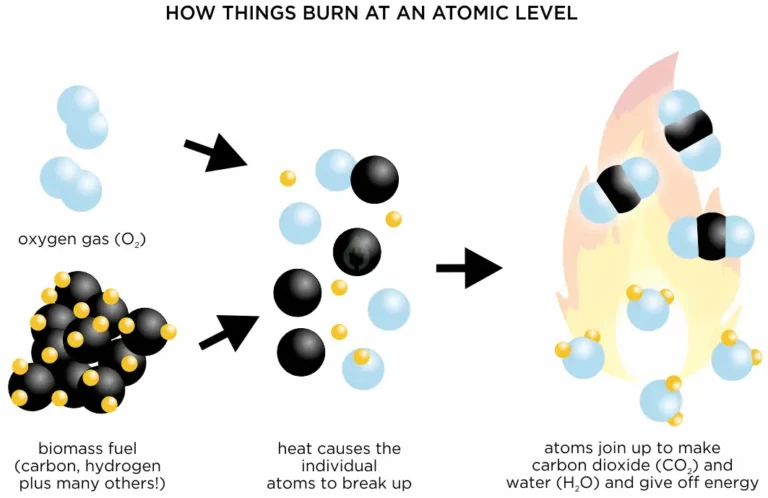Basics of Biomass Energy
Biomass Energy is energy generated by burning plant or animal material like, for example, wood. Humans have been burning wood to create heat and light for hundreds of thousands of years(1), and today biomass energy is still a vital part of our energy mix.
Small Scale Biomass
Using biomass energy can be as simple as heating a camping kettle over a burning pile of twigs. In the home, a log burning can be used to heat a room. Small-scale biomass boilers are available that can centrally heat a whole house and provide hot water. These systems are larger than a gas- or oil-fired boiler, but they are more environmentally friendly since they do not use fossil fuels. They are also cheaper to run than electric fires or immersion heaters. Larger systems like this can be used to heat an entire office block or apartments.
As the earth rotates from morning to noon to evening, sunlight hits every part of the surface at different angles depending on the time of day and time of year. The nearer to the earth’s equator, the higher the concentration of Solar Energy falls on the surface. You can find out how much Solar Energy falls on any location on earth using the Global Solar Atlas website(2).
Industrial Scale Biomass
At the other end of the scale, Industrial biomass electricity generation plants use exactly the same principle as the kettle on a fire, but at a much larger scale. The biomass fuel is burned in a combustion chamber, and the hot gases heat a heat exchanger, where cold feedwater is boiled to high pressure steam. This steam is fed into a high pressure boiler, and on into a turbine generator to generate electricity that is sent to the national grid. After the electricity has been generated, the exhaust steam from the turbine is fed into a secondary heat exchanger so the residual heat can be used to provide space heating.

Burning biomass fuels creates poisonous combustion gases and particles, and a modern biomass plant includes various systems to reduce or remove some of these by-products from the exhaust gas before it is vented back into the atmosphere.
There are many different kinds of plant and animal materials that can be used for biomass fuels, for example:
- Wood pellets
- Straw pellets
- Peanut shell husks
- Rape or corn meal
- Sunflower pellets
- Poultry litter and other animal waste
Burning Things Makes Carbon Dioxide Gas

Controversy Over the Sustainability of Biomass
There is controversy about whether or not biomass should be called a renewable/sustainable source of energy, due to the fact that it releases CO2 into the atmosphere.
CO2 is a gas that occurs naturally in the air. There has always been CO2 in the air, but the amount has been rising significantly since the start of the industrial revolution, and it is now higher than it has ever been during the last 800,000 years(2). For over a decade, the vast majority of climate scientists around the world have been convinced about the overwhelming evidence that human activity is driving this rise in CO2 levels(3).
CO2 is called a ‘greenhouse gas’ because it acts like a greenhouse around the earth, trapping the sun’s heat and causing the average land and sea temperatures to rise. The more CO2 there is in the atmosphere, the more of the sun’s heat gets trapped, and temperatures rise faster.
Left unchecked, rising surface temperatures will have catastrophic knock-on consequences for all life on earth. As the ice caps melt, this causes sea levels to rise, which will flood all low-lying coastal regions around the globe, where many cities are located. In an attempt to slow down the rate of global warming, governments across the world are implementing policies to reduce the amount of CO2 that humans release into the atmosphere.
Managed Woodland for Carbon Neutral Business
All trees and plants constantly soak up CO2 out of the atmosphere all the time they are growing, storing it in themselves in the form of carbon. When a tree is cut down and burned, all the carbon stored inside it turns into CO2 and is released back into the atmosphere. In effect, burning a tree is carbon neutral over the lifespan of that tree – it only releases as much CO2 as it absorbed while growing.
Coppicing hard woods from a managed woodland over a short term (15 year) rotation allows for sustainable, carbon neutral biomass fuel production. 1 hectare (10,000 square metres) of 15-year old chestnut will produce 4 tonnes (3.6 US tons) of oven-dry hardwood biomass fuel. With 1 hectare for each year of the 15 years of rotation, felling once per year, this means 15 hectares of land will produce a sustainable supply of 3.6 tons of fuel per year(4).
The lag between burning the wood, and waiting for trees to grow to capture the released CO2, has been described as ‘carbon debt’, placing the burden on future generations to plant enough trees to compensate for the wood being burned today(5).
In February 2021, a group of more than 500 scientists signed a letter to the European Union, arguing that “burning of wood will increase warming for decades to centuries. That is true even when the wood replaces coal, oil or natural gas”(6).
Deforesting ancient woodland or rainforest for biomass fuel is never sustainable nor renewable, since those forests cannot be replaced like-for-like over a short-term time frame.
Land Required for Biomass Fuel Consumption
On average, a small to medium scale biomass generation plant (between 5-20 megawatts) burns approximately 1 US ton of dry wood per hour for each megawatt (MW) of generation capacity(7). So a 20 MW plant would burn 20 tons per hour. This equates to 480 tons per day, or 175,200 tons per year.
Over 2,800 square miles of 15-year rotation managed woodland is required to sustainably produce enough hardwood fuel to run one 20MW biomass generation plant 24 hours a day, 365 days a year. This amount of land requirement for carbon-neutral, sustainable biomass fuel production is a significant issue that stands against the argument for “renewable” biomass.
The largest biomass electricity generation plant in the world, Drax in the UK, has a generation capacity of 2595 MW across 4 units(8). According to Drax’s own annual report, the plant consumed 7.37 million tonnes of wood pellets in 2020(9). To make this many pellets requires at least 14 million tonnes of felled wood. There is not enough land in the UK to sustainably provide this much wood, so the vast majority of Drax’s biomass fuel is shipped over the Atlantic ocean from the US, Canada and Brazil. The additional environmental cost of shipping biomass fuels around the world is another consideration in weighing up the sustainability of biomass electricity generation.
The Difference Between Biomass Fuels and Fossil Fuels
Fossil fuels (coal, oil and gas) also were once living things, but these are not counted as biomass. CO2 trapped in fossil fuels becomes highly concentrated during the fossilization process, and burning it releases CO2 that has been locked away underground for millions of years. It is not possible to plant sufficient trees at a fast enough rate to absorb all the ancient CO2that is released when burning fossil fuels.
